Some people think that driving on bad ball joints is like driving on flat tires, while some want to make the most out of its remaining life. So they just put up with it and drive on. We have researched how long you can drive safely with bad ball joints, and we have the answer.
How long your car can go before bad ball joints start to make it unsafe to drive depends on the severity of the problem. If the play is minimal, then you should be safe driving an additional 500 miles more. On the other hand, if it starts to wiggle badly like it's about to come off, call a tow truck!
If your car has bad ball joints, you'll need to know the maximum amount of time that you can drive it on that set of joints before they become unsafe. Read on as we discuss the factors that affect how long you can safely drive your car with bad ball joints.
Why Is Driving With Bad Ball Joints A Safety Hazard?
Driving with bad ball joints can be incredibly dangerous irrespective of your experience level. A bad ball joint can cause the wheels to sway.
However, the risk of you getting into accident depends on how much play you have in your ball joints, how much the ball joints have been exposed to the elements, your driving habits, and the road conditions.
Other factors that might cause the failure of your ball joint include corrosion, accident, excessive use (or abuse, for that matter), and normal wear and tear. Regardless of the reason, you should always consider replacing a ball joint before it becomes unsafe.
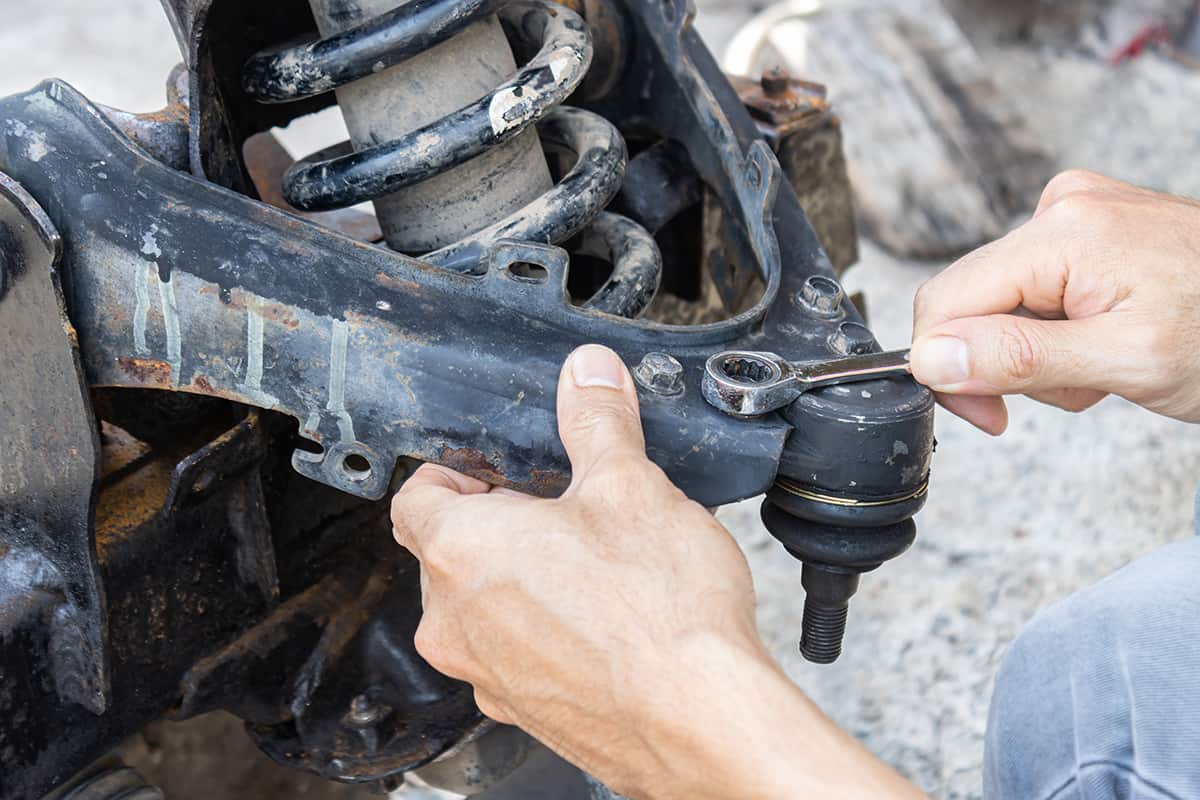
Since the wheels will go against the direction you want the steering wheel to go, this forces you to concentrate on pivoting the steering wheel, which is counterintuitive since you're supposed to be driving from muscle memory.
You might not want to worry about the ball joint until it stops functioning properly. When it starts to steer you in a different direction, it is most likely that it's wobbling, and it's just a matter of time before it falls off. You already know what's going to happen next.
What Causes Ball Joints To Go Bad?
If you've ever experienced a clunking noise or a loose feel in your car, you know that something has gone wrong. While this may seem like a small issue, it can quickly escalate and become a major problem if left unattended.
That's why knowing what causes ball joints to go bad is so important! You need to understand the factors that negatively affect your vehicle's ball joints, so you know how to keep them in top condition. Below are the telltale signs.
1. Exposure To The Elements
The rubber boot on the ball joint of your car is an essential part because this keeps the grease and bushing in place. These two ensure that the rounded end of the shaft and housing won't rub against each other.
A worn rubber boot can cause the grease to leak out of the joint. You should never let your car's ball joints lose their grease. It's because when grease is low, it causes the metal parts to produce heat as they rub against each other because of friction.
The lower the grease, the more friction and heat produced, and the faster this will lead to premature wear.
It's important to note that aside from keeping the grease from leaking, the rubber boots are also designed to protect the ball joints against the elements, which means they're designed to repel moisture, salt, and snow.
A worn boot can also expose the ball joints to moisture, which will cause the bearings inside to rust, especially if the grease is depleted. This will cause your car to make a squeaking sound when it's steering the wheels or driving over bumps.
2. Driving Habits
As you drive, your car is subjected to a lot of stress. Over time, the constant jostling of the wheels can cause the ball joint to wear out. Driving habits also play a role in wearing down the parts.
If you're constantly changing lanes and the need for speed is strong in you, your ball joints will experience a lot of jarring and will wear out more prematurely than the ball joints of a car that is steadily driven.
3. Road Conditions
If you drive on gravel roads, your car's ball joints will need to be replaced more often than if you drive on paved roads. This is because the joints on a car that drives on paved roads aren't subjected to as much stress as they would be on gravel.
4. Age
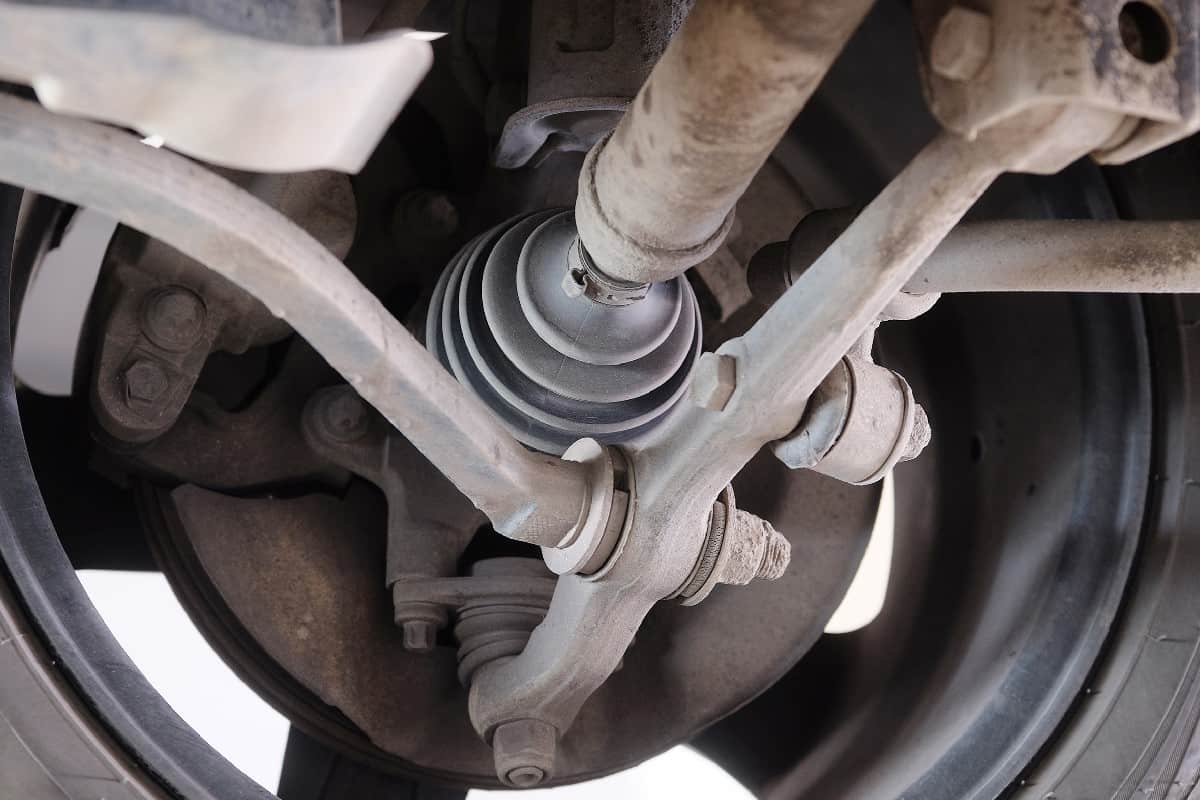
One of the main reasons why ball joints go bad is when they are still being used even if they've already gone beyond their designed lifespan. When a ball joint gets old, grease in the joint tends to dry up, making it hard to move.
How To Check For Ball Joint Play
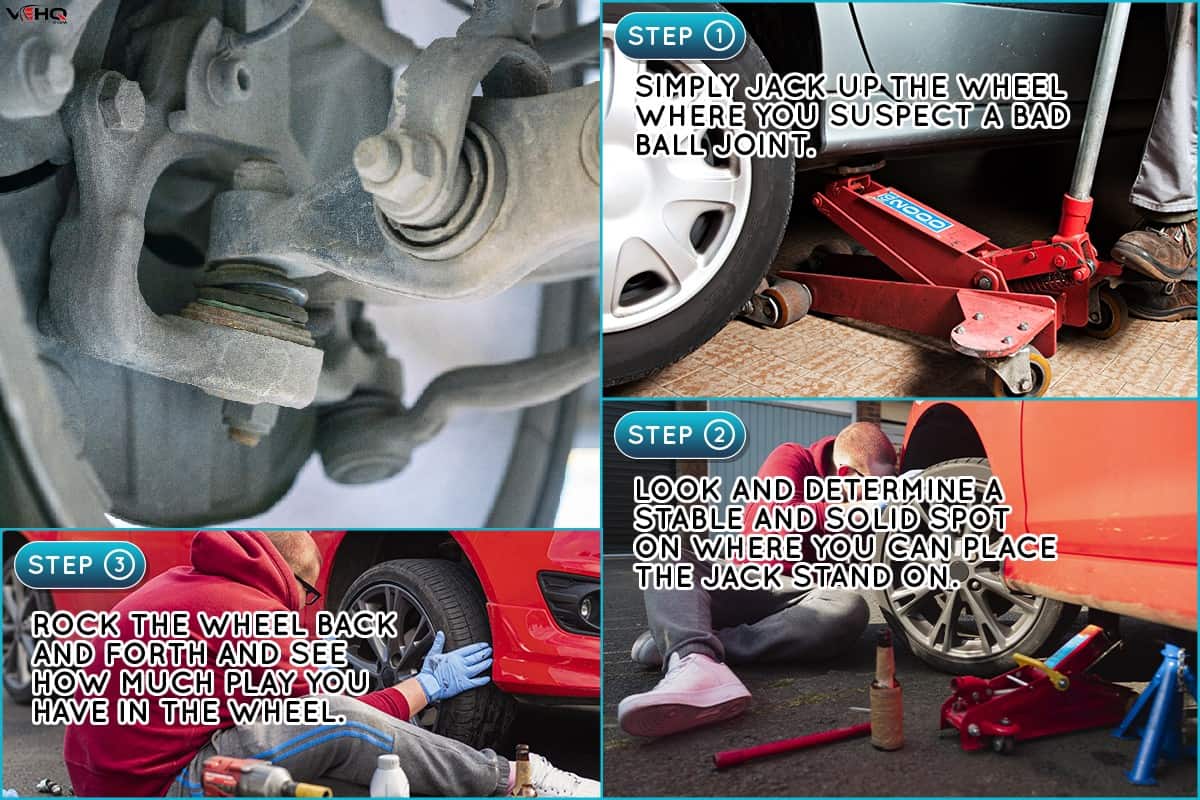
When a car hits a pothole or bumps over a bumpy road, the shock of the hit causes the ball joints to absorb the impact of the shock. Over time, this affects the car's alignment as the ball joints become loose from their housing.
Eventually, this causes the play of your ball joints to increase. A ball joint with much play means that you should get it repaired or replaced.
Checking for your ball joints' play is easy. Here's how you do it:
- Simply jack up the wheel where you suspect a bad ball joint.
- Look and determine a stable and solid spot on where you can place the jack stand on.
- Rock the wheel back and forth and see how much play you have in the wheel.
Check out this portable hydraulic jack on Amazon.
How To Replace Ball Joints
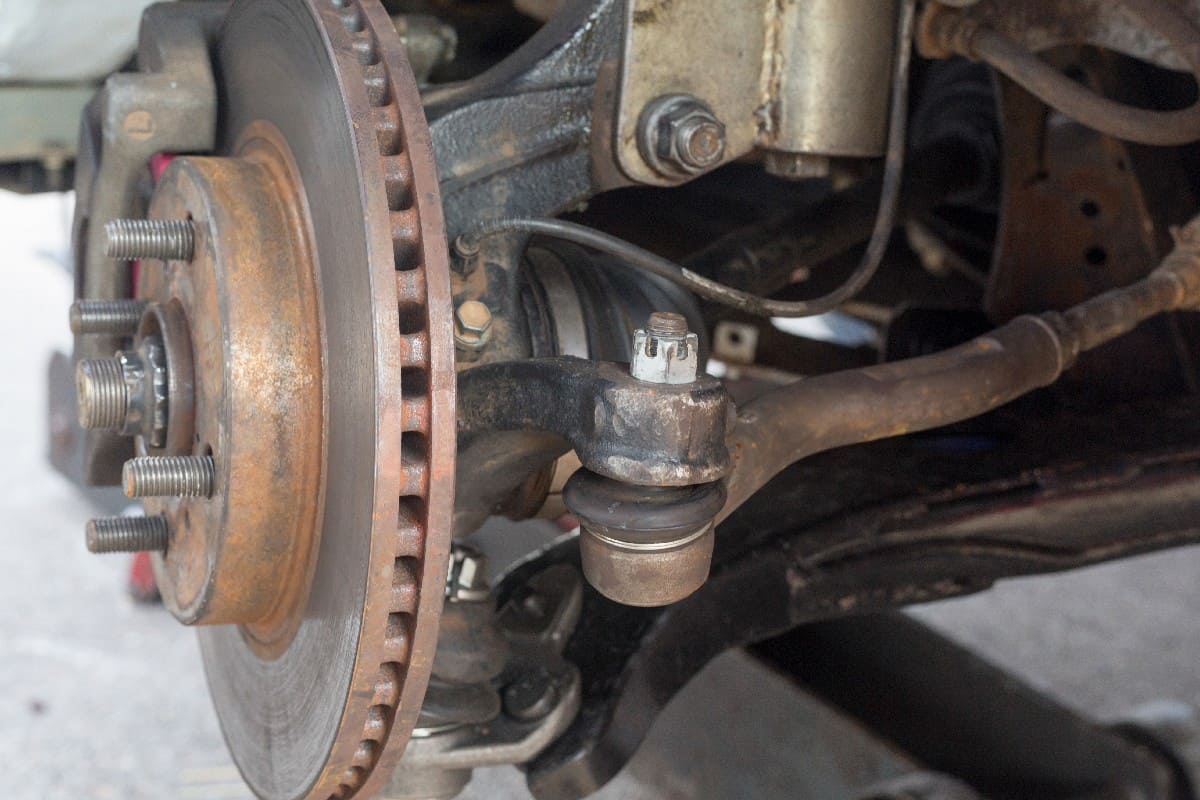
If you're looking to replace your ball joints, you may want to leave the job to a professional mechanic. Replacing the ball joint can be quite tricky for someone who is not experienced.
It may look easy when watching the tutorial on Youtube, but if you try and do it yourself, you could end up messing up your car's suspension system.
Besides, vehicles have different control arms, so the process of replacing ball joints varies. You may also have to remove the ABS of the car if it has one.
Also, one of the steps will involve you hammering the ball joint out. If you don't have the confidence to do it because of fear you might damage the control arm, it's best to leave it alone and get a mechanic you trust.
Nonetheless, we'll be showing you the best way to do it right, so follow along with us.
Steps To Follow On How To Replace Ball Joints
- Loosen the lug nut of the wheel.
- Jack the car up. Jacking up the car should provide you with space to work.
- Remove the wheel. Pull the wheel out of the hub and set it aside.
- Remove the brake caliper (optional). Locate the brake caliper bracket bolts and loosen them using a ratchet wrench to remove the caliper. You should see two of these.
- Rest the caliper bracket onto something just so it won't dangle. You don't want the caliper hose to support the weight of the caliper bracket, as this might cause the connection to loosen.
- Loosen the bolt of the ball joint assembly and take the nut off the tie rod.
- Slide the replacement ball joint in using a bolt. You may need the help of a jack and a piece of wood here to provide you with support for the lower control arm as you put the new ball joint into its place.
- Tighten the ball joint's bolt and put the cotter pin in. Do the same thing when putting the tie rod back into where it should be.
- Put the brake caliper back and wheel back on, and you're good to go!
The video below should illustrate the entire process.
Telltale Signs To Look Out For When Your Ball Joints Need Replacement
When your ball joints need replacement, there are many telltale signs that they need to be replaced. Some of these signs may be a bit obvious, while others may be more subtle.
In either case, it is important to get them replaced to ensure that your car and its suspension are safe. Here are some of them.
1. Steering Going Out Of Control
We've all experienced this scenario. You're driving along in a car, and suddenly the steering wheel starts to feel like it wants to go somewhere else!
The ball joint should pivot so that the steering wheel remains pointed in the same direction as the steering wheel is turned. In this case, the problem lies either with the ball joint or the tie rod that connects the steering wheel and the wheels.
When it comes to car maintenance, wearable parts like the ball joints and tie rods wear down over time. It's inevitable. You can try to prevent this by taking care of your vehicle, but it won't help.
2. Clunking In The Driver's Seat
When a ball joint is loose, it will become more sensitive to vibration. This causes the ball joints to rattle, especially when the car is running on a rocky road.
3. Squeaking In The Suspension
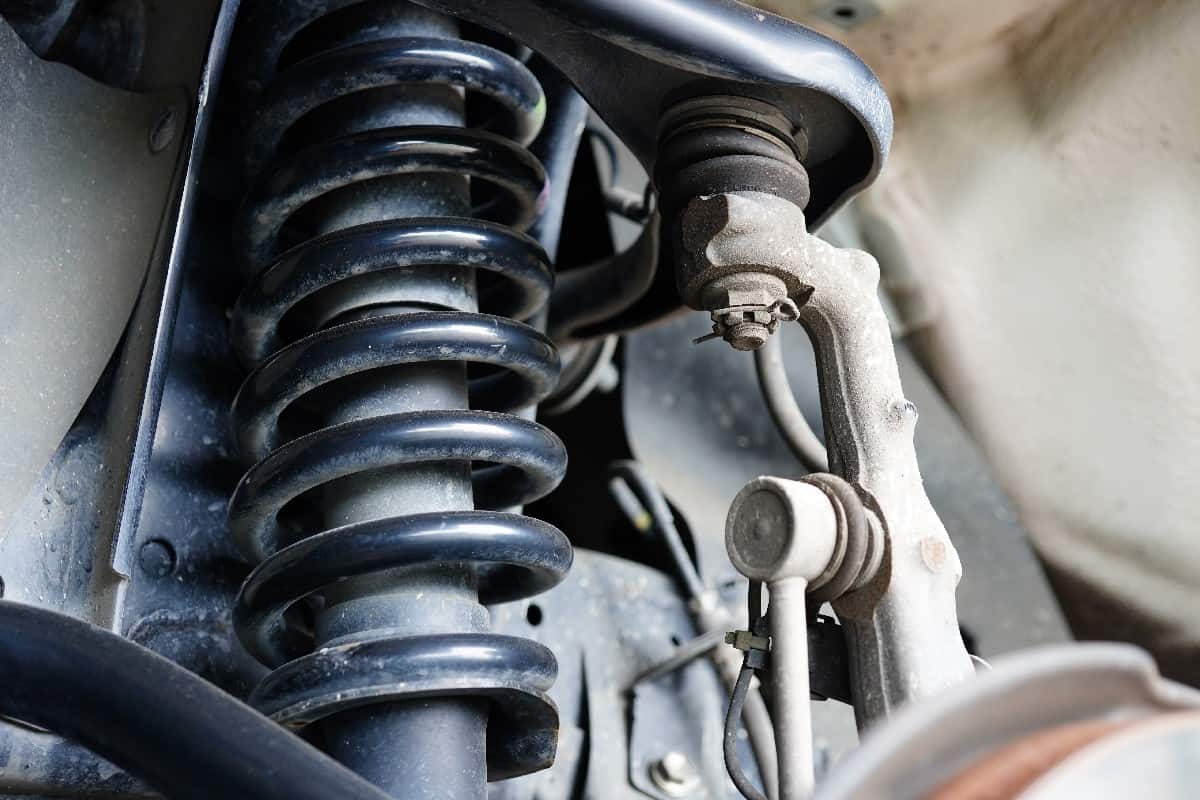
A lack of lubrication causes this due to a worn rubber boot. As the ball joint swivels, it will rub against the housing. Since the ball joint's grease has been depleted, the rubbing action may cause squeaking.
In Closing
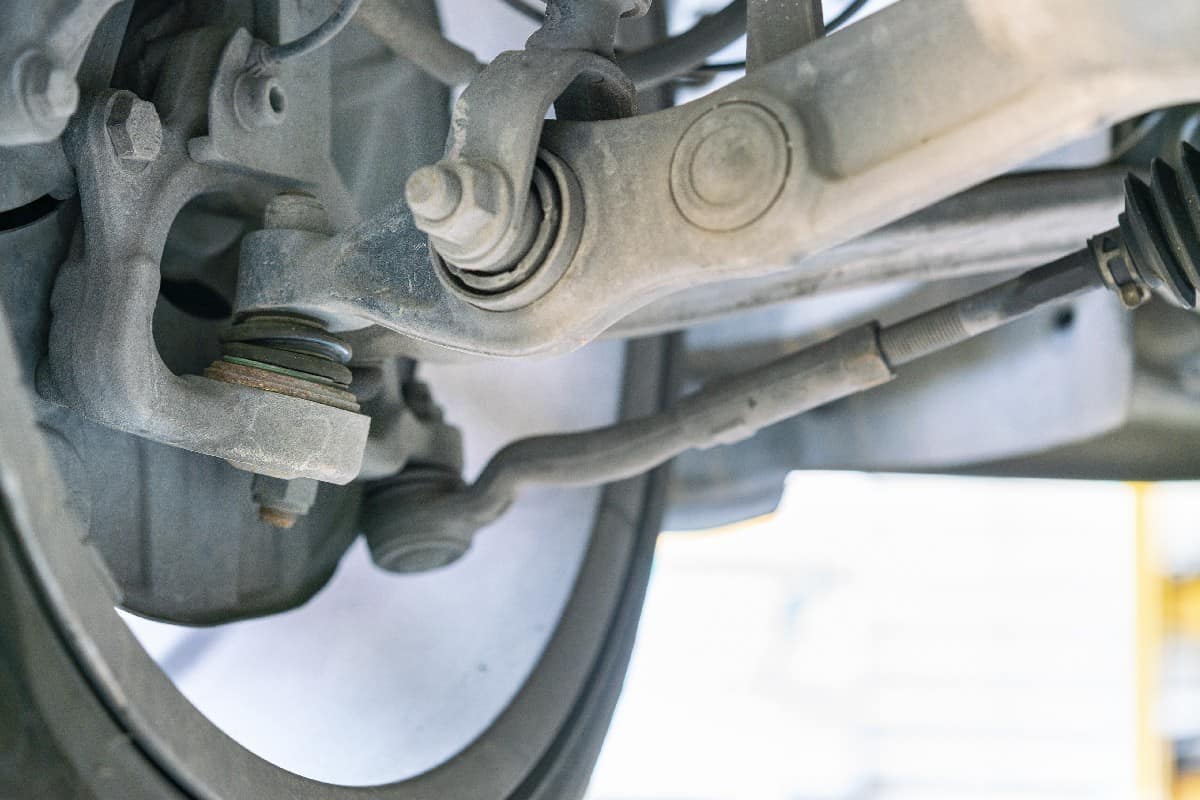
A car that has poor handling or that is clunking or squeaking as you drive are signs that you might have some issues with your steering or suspension.
If you are experiencing any of these symptoms, you should get it checked out immediately. The last thing you want to do is hit something, or worse, get into an accident because you were driving an unsafe car.
You might also like:
How Many Ball Joints Are On A Truck And When To Replace Them

